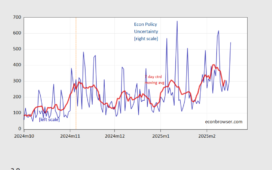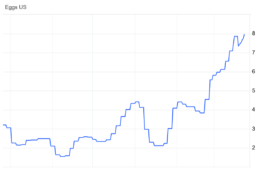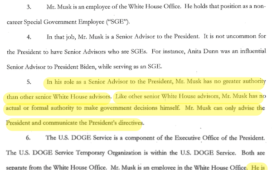By Lambert Strether of Corrente.
“The system’s not broken. It’s fixed.” –Apocryphal
I apologize to readers for the lateness of the hour. Normally, I’d sacrifice a Water Cooler, but I feel that with less than two weeks to go in the election, that would not be A Good Thing. –lambert
An important article in Vanity Fair, “Inside the Bungled Bird Flu Response, Where Profits Collide With Public Health” (archive), has broken the mainstream silence on the ill-controlled spread of “bird flu” (H5N1/HPAI HN51), so reminiscent of Covid in 2020, although proceeding at a slower pace (and yet with greater potential risk). In this post, I’ll first give a quick summary of the current state of play, where bird flu, from its start in Texas, and spread in the Midwest, has now leaped the Rockies, and is infecting both cattle and chickens in California (though the main focus of this post will be cattle). After briefly straightening out terminology and discussing risk, I will go through the Vanity Fair Article, quoting and contextualizing great slabs of it. I’ll conclude by comparing our response to “bird flu” with our responses to pandemics past. Caveat that this is really yellow wader material, but I am not yet familiar enough with the (several) institutions involved to do this.
Let’s begin with this optimistic statement from Ag Insider’s Food & Environment Reporting Network on October 6, 2024. The lead:
Although California reported outbreaks of bird flu in 12 dairy herds last week, most states have gone weeks without new cases being discovered, including those with high levels of scrutiny, according to USDA data. Agriculture deputy undersecretary Eric Deeble cited Colorado and Michigan as examples of the tailing off of infections and said during a multi-agency teleconference that “this decrease gives us confidence” of eliminating the virus in dairy cattle by isolating herds.
Sadly, by October 20 we saw this headline in the Los Angeles Times: “As bird flu outbreaks rise, piles of dead cattle become shocking Central Valley tableau.” Again the lead:
There’s a sickness hovering over Tulare County‘s dairy industry. On a recent 98-degree afternoon, dead cows and calves were piled up along the roadside. Thick swarms of black flies hummed and knocked against the windows of an idling car, while crows and vultures waited nearby — eyeballing the taut and bloated carcasses roasting in the October heat. Since the H5N1 bird flu virus was first reported in California in early August, 124 dairy herds and 13 people — all dairy workers — had been infected as of Friday. And according to dairy experts, the spread of the virus has yet to abate.
Clearly, the USDA’s “confidence” was misplaced. Before getting into gist of the article, let’s clear up the terminology issues.
Terminology: “Bird Flu” or “H5N1”?
Wikipedia (sorry) redirects “Bird Flu” to the fancier “Avian Influenza,” where we find that bird flu is caused by the Influenza A virus, of which there are two types: low pathogenic avian influenza (LPAI) and high pathogenic avian influenza (HPAI), “low” and “high” depending on the symptoms in bird, not mammals, cows being mammals (as are humans). H5N1 is a particularly virulent subtype of HPAI, although there are others, like H7N3 or H7N9. (The entry also includes a guide to the nomenclature).
In this post, I will write “H5N1” and not “bird flu”, partly because that is, after all, the correct nomenclature for the virus that is actually circulating, but also to make the question “Why do cattle get diseases for birds?”) go away. Note, however, that some epidemiologists will say HPAI, because (presumably) the same measures can be used to control all subtypes of such viruses, and others will say “HPAI/H5N1”. I think this proliferation of names is in good faith (unlike the decision making at WHO when choosing the name “Covid-19). CDC writes “HPAI A(H5N1).”
H5N1 Risks
H5N1 is dangerous stuff. Worse, we’ve known that for a long time; dead cattle by the road should come as no surprise. From Nature, “The global H5N1 influenza panzootic in mammals“:
Influenza A viruses (IAV) have caused more documented global pandemics in human history than any other pathogen1,2. High pathogenicity avian influenza (HPAI) viruses belonging to the H5N1 subtype are a leading pandemic risk. Two decades after H5N1 “bird flu” became established in poultry in Southeast Asia, its descendants have resurged, setting off an H5N1 panzootic in wild birds that is fueled by (a) rapid intercontinental spread, reaching South America and Antarctica for the first time; (b) fast evolution via genomic reassortment; and (c) frequent spillover into terrestrial and marine mammals9 , including European fur farms, South American marine mammals, and US dairy cattle, . Historically, swine are considered optimal intermediary hosts that help avian influenza viruses (AIV) adapt to mammals before jumping to humans. However, the altered ecology of H5N1 has opened the door to new evolutionary pathways.
Contrast CDC’s statement on “risk to humans” (I’ve helpfully underlined the minimizations):
The wide geographic spread of HPAI A(H5N1) viruses in wild birds, poultry, and some other mammals, including in cows, create additional opportunities for people to be exposed to these viruses. Therefore, there be an increase in human infections resulting from bird and animal exposures, even if the risk of these viruses spreading from birds to people has not increased. CDC believes the risk from bird flu viruses is . People who have job-related or recreational exposure to infected birds or animals, including cows, are at greater risk of contracting HPAI A(H5N1) virus.
At least they’re not telling us it’s “mild.” This is cheerfully naive tosh at best, eugenicist framing at worst. Have these people never heard of Taleb’s “risk of ruin“? Of the precautionary principle? Apparently not, as we shall see now that we turn to Vanity Fair.
How Our H5N1 Response Went Wrong
“Inside the Bungled Bird Flu Response, Where Profits Collide With Public Health” (“Bungled”) starts with the relationship between veterinarians and the USDA:
[W]hen something goes seriously wrong on America’s plains and pastures, something that could threaten animal safety or food production, USDA officials rely on rural veterinarians to sound the alarm.
Those vets report findings to state veterinarians, whose doors and inboxes are always open. They even post their cell phone numbers online. The state veterinarians, in turn, utilize a network of diagnostic laboratories approved by the USDA, chief among them the National Veterinary Services Laboratories (NVSL) in Ames, Iowa.
There’s little standing on ceremony, and state veterinarians generally feel free to reach out directly to leading USDA officials….
Until now:
That, at least, is how it’s supposed to work. It’s how veterinarians responding to dairy farms in the Texas panhandle earlier this year assumed it would work when they stumbled upon hellish scenes out of a horror movie. Feverish cows in respiratory distress producing trickles of milk. Dying cats. Enough dead barn pigeons and blackbirds to suggest a mass poisoning. Living birds with twisted necks, their heads tilted skyward.
Worried vets enlisted help from colleagues in other states. In mid-March, one sent an email to an emergency address at the NVSL, urging the lab to test for something seemingly unthinkable: highly pathogenic avian influenza, which had never before been detected in cows.
Days went by in silence.
The risks (of ruin, as above) are known:
Experts are hesitant to speculate about what could happen if the virus were to begin more widely infecting humans, for fear of spreading panic, but the toll could, in the worst case, dwarf that of COVID-19. If the virus ‘infects a person infected with a human flu strain, and something comes out that is reassorted and adapted to humans? I don’t even want to imagine,’ [Jürgen Richt, regents and university distinguished professor at Kansas State University] says. ‘Not good.’
But USDA failed to act:
At that existential moment back in March, when the virus was first detected in cows, veterinarians involved in the response had every expectation that a well-honed network of experts, led by USDA scientists, would immediately rev to life.
But it didn’t. “Nobody came,” says one veterinarian in a Western state. “When the diagnosis came in, the government stood still. They didn’t know what to do, so they did nothing.”
Not precisely:
The vets who sounded the alarm have been silenced, some even fired, and won’t discuss their experiences on the record for fear of reprisals. And the federal agency that was supposed to help thwart the virus instead has allowed for an unspoken “don’t test, don’t tell” policy among dairy farmers.
The rot certainly set in faster than with Covid!
Why Our H5N1 Response Went Wrong
Continuing with “Bungled“, the Biden administration at least gestured in the direction of improving the Federal Government’s to pandemics:
In the wake of the badly bungled federal response to COVID-19, the Biden administration took steps to guarantee a swifter and more coordinated response to future outbreaks. In June 2023, it established the Office of Pandemic Preparedness and Response Policy (OPPR) and appointed the retired major general Paul Friedrichs, a former military doctor with a decades-long career in biosecurity preparedness, as director.
Then H5N1 struck the dairy industry:
But when a black swan scenario materialized this spring—an unprecedented bird flu outbreak in dairy cows, originating in Texas, during an election year in which absolutely no one wants to talk about scary viruses—Friedrichs faced a jumble of state and federal agencies with overlapping jurisdictions. The Food and Drug Administration regulates milk, the CDC handles human infections, and the USDA oversees cows and farms, which are often staffed by undocumented immigrants who may be reluctant to interact with government officials.
The key point is the FDA’s dual mandate: The health and safety of the nation’s food animals, and promoting and protecting America’s $174.2 billion agriculture trade:
Looming over the USDA’s reluctance to conduct a more transparent and proactive campaign against H5N1 in dairy cows are export agreements worth more than $24 billion each year, which include 2.6 million tons of milk, cheese, and ice cream, not to mention more than 5 million tons of poultry and beef. For years, poultry trade agreements have stipulated that the birds be free of H5N1. No one ever considered that such a caveat was needed for the dairy and beef agreements.
If those products were to be returned to US markets, it could shrink key agricultural industries and threaten American jobs. “The fear boils down to: How will this affect us in trade?” says Alan Young, chief technology officer for Medgene, an animal-vaccine company. “Nobody knows what the effects are, but .”
And “business concerns” won out:
Says Rick Bright, former Health and Human Services deputy assistant secretary for preparedness and response: “This didn’t have to be a nationwide outbreak, but there was .
And whoever’s minding the store at the White House either cannot or will not whip the USDA into line:
Today, without nationwide surveillance or a clear understanding of the H5N1 outbreak’s scope, “we are repeating every single mistake” of the last pandemic, says Keith Poulsen, director of the Wisconsin Veterinary Diagnostic Laboratory. “The whole adage of ‘don’t take a test because we don’t want to know what the answer is’ is really irritating.”
As one White House health official tells Vanity Fair, “Not only have we not learned, we have regressed.”
So, at this point we are not sure how H5N1 is transmitted (fomites, aerosols, both? dairy lagoons?), we have not mandated testing for cattle (except when they are moved between states, and even that doesn’t work, as California herds were by cattle shipped to and from Idaho). We have not mandated testing for dairy workers. USDA is slow-walking submitting H5N1 sequences to GISAID (USDA: 24 days; CDC: 8 days; Vietnam and Cambodia, faster than CDC). We have not mandated PPE on dairy farms. Private firms say that vaccines are ready, but they have not been approved. And so on[1]. The Biden Administrations’s H5N1 is a complete debacle. Let ‘er rip!
Conclusion
[To come shortly]
NOTES
Fortunately, USDA has a research agenda (PDF), “U.S. Highly Pathogenic Avian Influenza A(H5N1) Research Priorities: October 2024.” I quote in relevant part, helpfully underlining the agencies and services involved:
Experts from across the U.S. Government have outlined a research plan to continue furthering our understanding of the A(H5N1) virus and guide response activities to stop the expansion of the outbreak. These priorities will also guide the broader global scientific community [oh right].
This collaborative, whole-of-government, one-health response [blah blah blah] is focused on addressing scientific questions that have arisen across both animal and human health. For animals, the , as the in-house research agency of , is the leading authority for influenza research in poultry and livestock, partnering with other agencies, academia, and research institutions. Additionally, other USDA agencies including , Food Safety Inspection Service (FSIS), the have been working in coordination with sister agencies and in their respective mission areas through field investigation and epidemiology, diagnostics, food safety, and applied research coordination activities to comprehensively learn as much as possible about A(H5N1) virus transmission and risk factors within herds, between herds, and between dairy and poultry premises. When it comes to human health, Administration for Strategic Preparedness and Response (ASPR), , , and within the – that is working closely with USDA to understand A(H5N1) virus biology, epidemiology, and factors that influence disease pathogenesis and transmission, mitigate risk and prevent the transmission among both people and animals, ensure that America’s food supply remains safe, support preclinical and clinical development, regulatory approval, and procure treatments, vaccines, and diagnostics for H5 viruses. In response to the ongoing A(H5N1) outbreak, the interagency team has prioritized research focusing on the following objectives… .
So you see anyone in charge? No? What we have is an “interagency process.” From the Brookings Institution, “The Case for Reforming the Interagency Process” (2007):
The United States Government interagency process is badly broken. This is especially true in the realm of national security. The federal government has archaic, vertical, “stove-pipe” organizational structure and processes that severely undermine success in operations and policy implementation. We are unable to achieve unity of effort and a wholeof-government approach to devising solutions to critical problems. Today’s world is extremely complex and requires the horizontal integration of efforts from a variety of departments and agencies in our executive branch. National level reform of the interagency o\process is urgent, yet we have not even begun.
Sound familiar? It’s almost as if the effort were designed to fail! The contrast with Operation Warp Speed couldn’t be greater.













